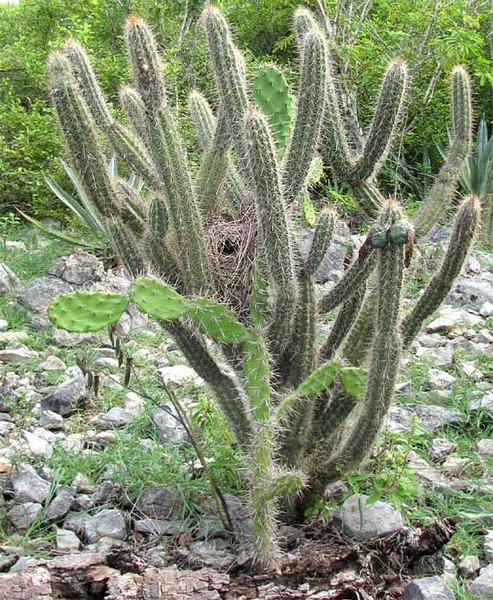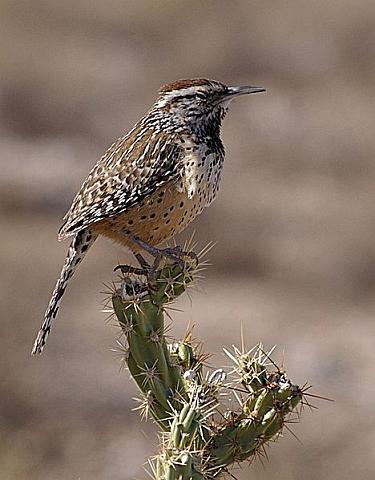
Now that the leaves are off the trees you can see birds’ nests that were used last summer. The nests are abandoned now because most birds don’t use them outside the breeding season.
The cactus wren is an exception. The male and female build a selection of domed stick nests in the cactuses in their territory, usually in prickly pear or cholla. You can see a nest hole in the middle of this photo of an old-man cactus.
The nests provide good protection from weather and predators so after the breeding season is over the wrens continue to roost in them. Most of the time the cactus spines keep the birds safe, though some very careful climbing snakes can successfully raid the nests.
Here’s what the owner of such a nest looks like. This cactus wren appears to be taking a dim view of the photographer.

.
Roosting in one’s nest may be a wren trait. On Sunday Marcy Cunkelman told me that a Carolina wren is again roosting in the woven nest on her front porch.
Have you noticed this among wrens in your area?
(photo of nest in the public domain on Wikimedia Commons; photo of cactus wren by Mark Wagner from Wikimedia Commons. Click on each photo to see its original.)
I have 3 Carolina Wrens that roost in a hanging planter on our patio. It was planted with a stag horn fern during the summer and is covered by a large overhang. The bark planting mix along with some sphagnum moss makes for a warm safe roost during the cold months. Seems almost everyday around 4:00 P.M. the wrens make their way to the basket, first stopping on the fence post, singing, looking around, making sure the coast is clear and then flying into the basket. Each wren has carved out a hole in the moss. I wonder if they use the same hole every evening? In the morning, I get the best song in the world. Thinking its a “thank you” for a warm safe place every night.
I believe the pair of Carolina wrens who had my yard as a territory in Chapel Hill roosted in their nest all year long. It was on top of a bay window and every morning throughout the year I could hear them scampering around up there.
Neat! I was wondering what built a big nest in a cholla that I saw in Tucson.
http://www.flickr.com/photos/steve_valasek/6467710977/